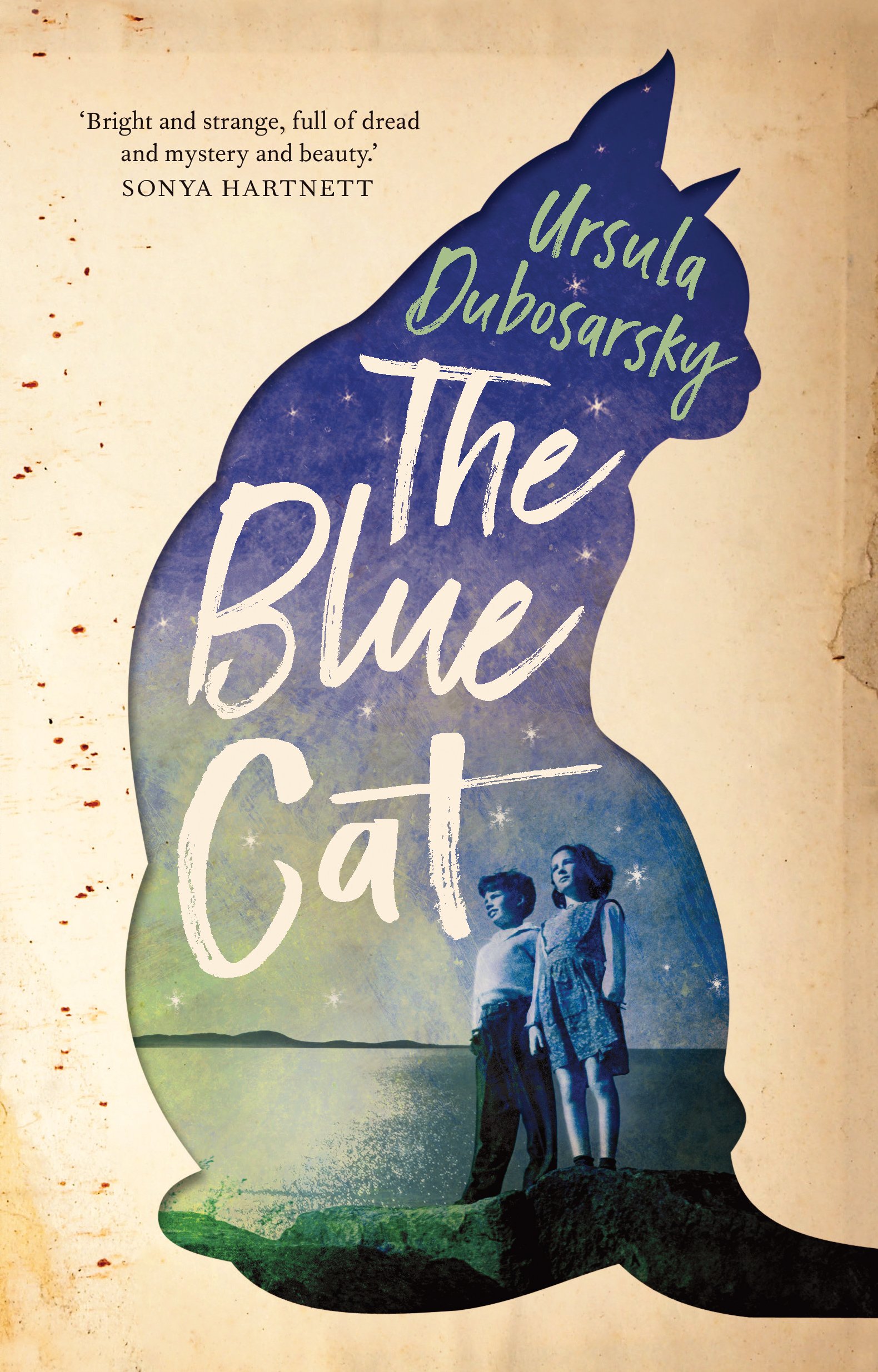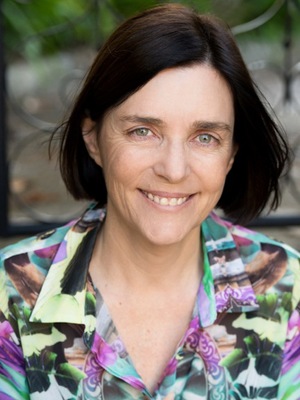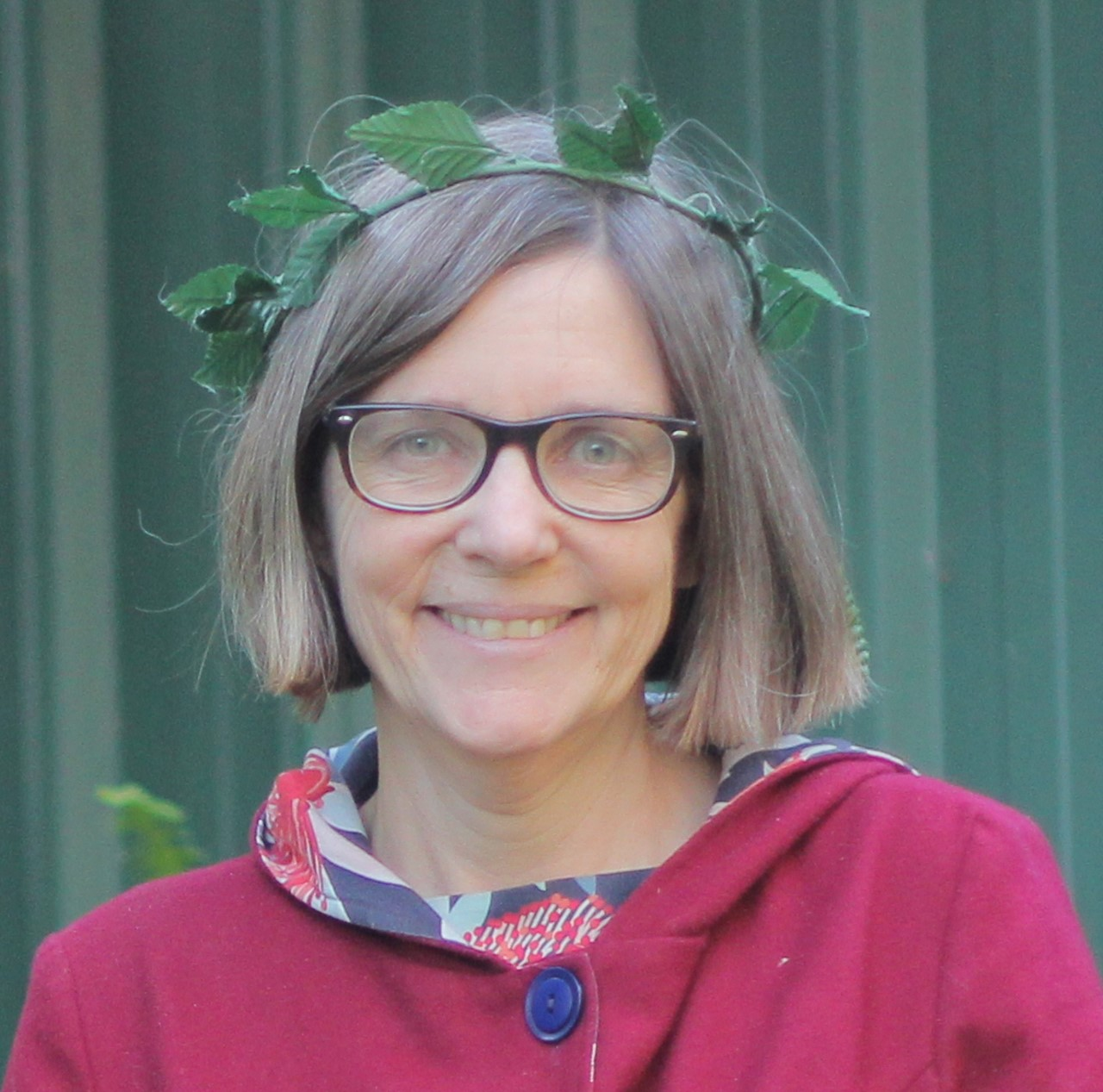Title of the work
Country of the First Edition
Original Language
First Edition Date
First Edition Details
Ursula Dubosarsky, The Blue Cat. Sydney: Allen & Unwin, 2017, 169 pp.
ISBN
Genre
Fiction
Novels
Target Audience
Children
Cover

Courtesy of the publisher.
Author of the Entry:
Elizabeth Hale, University of New England, ehale@une.edu.au
Peer-reviewer of the Entry:
Miriam Riverlea, University of New England, mriverlea@gmail.com
Daniel A. Nkemleke, University of Yaounde 1, nkemlekedan@yahoo.com

Courtesy of the Author.
Ursula Dubosarsky
, b. 1961
(Author)
Ursula Dubosarsky is an Australian writer of children’s and young adult fiction. Born in Sydney in 1961, she received an education in classical languages and literature at the University of Sydney (1982). She has a PhD in English Literature from Macquarie University (2008). She travelled to Israel and worked on a kibbutz, where she met her Argentinian husband. Her work is influenced by her travel, by an enjoyment of word play, intertextual referents, and an empathy with her child characters. Her child characters tend to be intelligent, intense, and observant loners. She is also very fond of guinea-pigs, which appear in many of her works.
Source:
Official website (accessed: September 4, 2020).
Bio prepared by Margaret Bromley, University of New England, brom_ken@bigpond.net.au and Elizabeth Hale, University of New England, ehale@une.edu.au
Questionnaire
1. What drew you to writing/working with Classical Antiquity and what challenges did you face in selecting, representing, or adapting particular myths or stories?
Well, things you read stick in your mind as a writer and I suppose you store them away for the future, without conscious intentions. I loved the tone and energy of Ovid’s Metamorphoses from my very first reading when I was 12 in a Year 8 Latin class, translating the Pyramus and Thisbe episode and then the story of Io. I found them enchanting, unsettling and very funny. They were not stories I had ever read before.
At much the same time as I was reading the Metamorphoses I also saw a school French production of Jean Anouilh's Antigone which made an enormous impression as a work of art; then a couple of years later I saw another school production of Offenbach's Orpheus in the Underworld. A very different approach to Anouilh! and yet the works have much in common, in their apprehension of the classical world, not something alien and distant from modern society, but endlessly resonant. Then we read A Midsummer Night’s Dream, and another extremely entertaining incarnation of Pyramus and Thisbe. I’m sure all these works, all written for stage, were fundamental to my choice of Ovid when I was asked, 35 years later, to write some plays for primary school children for the NSW School Magazine.
I was under a certain constraint with the plays, particularly in regard to the sexual activity which is central to several of the stories, as the School Magazine is an official publication of the NSW Department of Education. There was some concern from higher up in the Department (not the Magazine itself) from the very first play, "Io, the Girl who turned into a Cow" – it was felt to be crossing the line of decent behaviour and a bad model for children. There was a meeting called, and a discussion held, but in the event the play was published without alteration, and no objections were raised to further plays.
In the novels, Theodora’s Gift, How to Be a Great Detective, Black Sails White Sails, The Golden Day and The Blue Cat, for the most part the classical myths are adapted almost secretly – the reader often may have little idea that I am working from a classical story, which they may or may not be familiar with. It is almost something that feeds me as a writer, than helps me find mirrors of meaning, watery shadows deep under water of centuries of human storytelling. The same is true of the use of Biblical stories in The First Book of Samuel and again Theodora’s Gift, which draws on both Biblical and classical mythology.
2. Do you have a background in classical education (Latin or Greek at school or classes at the University?) What sources are you using? Scholarly work? Wikipedia? Are there any books that made an impact on you in this respect?
I did six years of Latin at high school, then another two years of Latin and two years of Greek at Sydney University. But my pleasure has always been literary and not scholarly – I read the works as a reader and a writer, not a scholar. Later in life I have joined Latin reading groups, through organisations such as the Workers Educational Association. As a writer I suppose I prefer to respond directly to the texts, word for word, as works of literature, as one reader to another, without mediation.

Courtesy of the Author.
3. How concerned were you with "accuracy" or "fidelity" to the original? (another way of saying that might be — that I think writers are often more "faithful" to originals in adapting its spirit rather than being tied down at the level of detail — is this something you thought about?)
I certainly did think about it when I was writing the plays, and I worked all the time with the original Latin texts, hoping to include as much detail as possible. But what I wanted most of all was to give children a sense of what the experience of reading Ovid might be like, that they would come away from the plays with an impression that these are not heavy, ponderous works, but witty, light, accessible and at the same time strange, dramatic and surreal. My primary motive is that children will have the pleasure of reading in the moment, but I’m also hoping that when they see the name Ovid anywhere in the future that they will associate it with laughter and wonder – and that they may be drawn to read more.
4. Are you planning any further forays into classical material?
Not specifically, but as you can see, I think I can’t help myself! The literature of the classical world seems inseparable from the way my mind works as a writer. I’m sure there will be more …
Prepared by Elizabeth Hale, University of New England, ehale@une.edu.au
Summary
The Blue Cat is set in Sydney, 1942, and filtered through the observations of a dreamy child, Columba. Ellery (Elias), a new boy, arrives at Columba’s school: he either does not speak English or cannot speak. He is from Europe (You-rope) and may be a German-Jewish refugee. His mother is missing, and no longer sends letters. "Hitler killed her", says Columba’s brash friend, Hilda. As Columba observes the changes affecting Sydney during the war (curfews, air-raid drills, the presence of war ships in the harbour, the news from Darwin, the fall of Singapore), she is also fascinated by Ellery, by a blue cat that has also appeared at the same time, and the mystery of his missing mother. Interspersed through this story are historical documents from the period, including news items, pages from a book about cats, snatches from a German translation of Treasure Island, and images from Virgil’s Aeneid. Columba’s father has read The Aeneid in the original. The flight from Troy, and of Aeneas carrying Anchises from Troy, are part of these images.
Analysis
A hallmark of Dubosarsky’s work is delicate intertextuality. Here, references to the flight from Troy underscore the emotional resonance of Elias’s story, his flight with his father from Germany, the missing mother/wife, the sense of a civilisation in peril. The name, Columba, is late Latin for "dove", and the character reflects on its connection with ideals of peace. Dubosarsky comments in an afterword about the resonance of historical documents, and in the conversation has commented about a pervading interest in ‘lost’ aspects of history, and a sense of cultural antiquity and continuity in Latin and Greek literature.


